What are Cilia and Flagella?
Cilia
Cilia (singular is cilium) are slender, tiny and microscopic structures present in the eukaryotes. Cilia are primitive i.e. they exist from the beginning of the time. A single Cilium is about 1 to 10 micrometres in length and less than 1 µm in width. There exist two broad categories of cilia: Motile cilia or Non- motile or Primary cilia. Both the form function as sensory organelles.
Motile cilia
Motile or moving cilia are found in the epithelial surfaces of the respiratory tract, the chambers of the central nervous system, the lungs and the middle ear. The motile cilia show rhythmic waving or beating in coordinated motion. These cilia keep away any dust, dirt and mucus from the lining of the airways i.e. lungs and thus help us to breathe without any difficulty. Motile cilia help in propelling the sperms. In the fallopian tubes in females, the cilia trigger the release of ovum in the direction of the uterus from the ovary.
Non-motile or primary cilia
These cilia are responsible for sensing the surrounding environment. They act as sensory antennae for the cells. These appear as single appendages microtubules e.g. kidney tubules. In the eye, the primary cilia are present in the photo-receptors of the retina and allow the movement of vital molecular stuff from one end of the photoreceptor to the other end.
Flagella
The term ‘flagellum’ in Latin means ‘whip’. Flagella are slender, thread like organelles that are microscopic and help protozoans, bacteria and spermatozoa to swim. Flagella are slash like organelles found in both prokaryotic and eukaryotic cells. A flagellum measures around 150 µm in length. The major function of flagella is cellular locomotion helping the cell to move in different directions for the need of reproduction, digestion and circulation. They also function as sensory structures for outside temperature. There are three types of flagella; bacterial, archaeal and eukaryotic also known as protists, plants and animals. Bacterial and archaeal flagella are responsible for cell locomotion. All three types of flagella are structurally different. Nexin present in flagella creates wave like motion.
The prokaryotic and eukaryotic flagella differ in protein composition, shape and process of propulsion. However both are utilized in swimming.
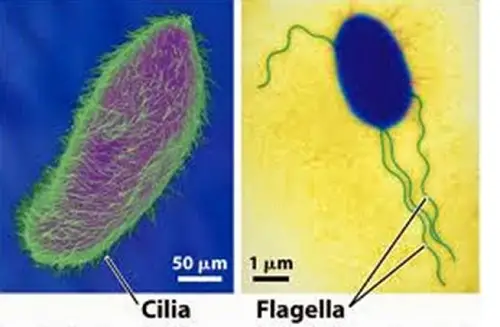
Figure 1. Structure of Cilia and Flagella (Gibbons, 1981)
Difference between Cilia and Flagella
1. Shape
Cilia
Cilia are needle or hair like, slender, short and microscopic organelles. These can be explained as slender projections that project from all eukaryotic cell bodies. Cilia are composed of smaller proteins called tubulin.
Flagella
Flagella are helically lash like appendages and are long, curly and whip like organelles composed of protein called flagellin. A flagellum has a sharp bend outside the outer membrane called the ‘hook’. The bottom of the flagellum (the hook) close to the cellular base is fastened to the basal body encompassed in the cell envelope. The shape of flagella is of significant taxonomic importance because of their function. Flagella protrude from the cell body of both eukaryotic and prokaryotic cell bodies.
- Structure
Cilia
Non-motile (primary) cilia have 9 + 0 axoneme construction and the motile cilia have 9 + 2 axoneme construction. Also, both types lack nexin.
Flagella
Flagella has 9 + 2 axoneme construction and nexin appears between microtubule doublets.
- Dimensions
Cilia
An individual cilium can measure around 1-10 µm in length and less than 1 µm width. The dimeter is around 0.25 µm.
Flagella
Length in flagella varies in different organisms. Some have length around two to three times (10 µm) the length of the cell. A single flagellum can measure around 150 micro meters in length.
4. Number per cell
Cilia
They are numerous in number present inside a single cell
Flagella
They are few in number present inside a single cell.
5. Movement
Cilia
Ciliary movement is brought about by the beating of cilia. Innumerable cilia protruding from the beating process shows relaying effect giving the effect of waves and this process is known as Metachronal Rhythm. Cilia are unbending on the back stroke, propelling the organism in a forward direction, but show bending movement on the onward stroke. It can be said that cilia show rhythmic and sweeping movement.
Flagella
Flagella show undulatory and sculling movement. A single flagellum rotates in either a clockwise or a counter clockwise direction, in a movement similar to that of the propeller.
- Coordination
Cilia
A Cilium shows coordinated beating of waves.
Flagella
A flagellum shows independent beating pattern.
- Function mechanism
Cilia
Cilia utilizes kinesin (an activity of a cell in response to a stimulus) for cellular motility, Kinesin has ATPase enzyme that catalyse the decomposition of Adenosine Triphosphate (ATP) into Adenosine Diphosphate (ADP). This enzyme helps in producing energy that helps the organism in moving.
Flagella
Movement in flagella is driven by proton translocation. The proton motive force takes place when the plasma or cellular membrane receives energy as a result of the electron movement carried out by the electron transporter implanted in it. This proton- motive force energizes the flagella and the cell behaves like a tine battery.
- Function
Cilia
Cilia are important in the cell cycle and replication. Cilia create currents to push food and thus help in feeding and digestion. Cilia also help in locomotion.
Flagella
Flagella also help in locomotion. Flagella of collar cells give rise to water currents in the canal system of sponges. Flagella is able to perceive number of sensations.
- Examples
Cilia
Present in respiratory organs and reproductive organs of all mammals
Flagella
Present in bacteria, archaea and prokaryotes. In mammals, sperm cells contain flagella.
Summary
The points of difference between cocci and bacilli have been summarized below:
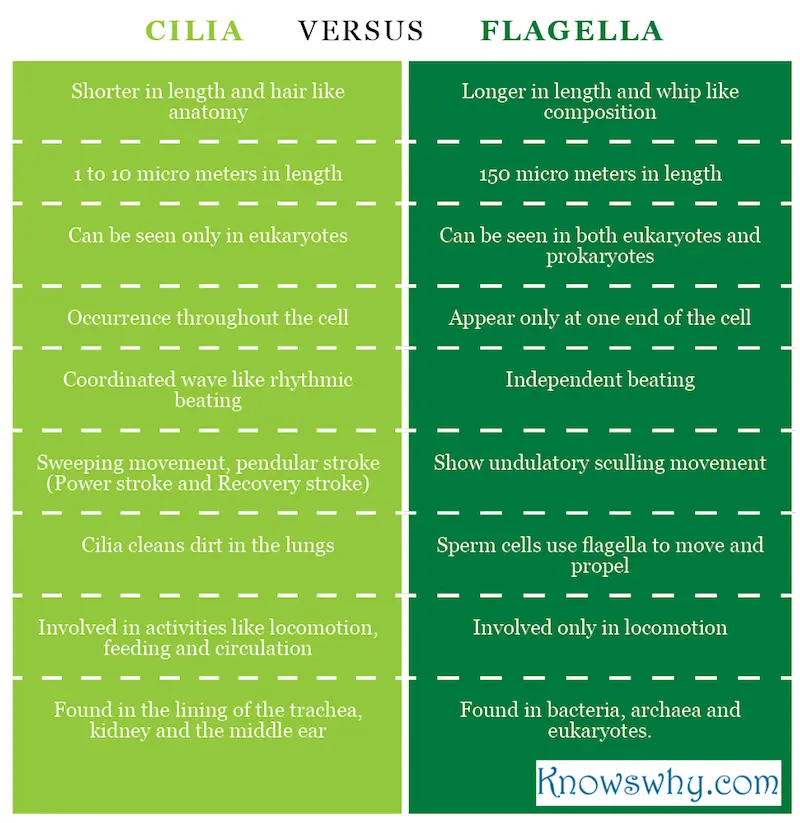


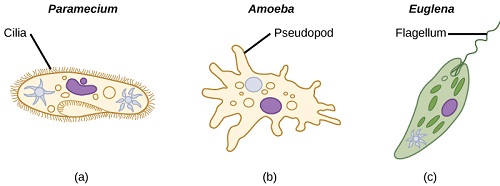

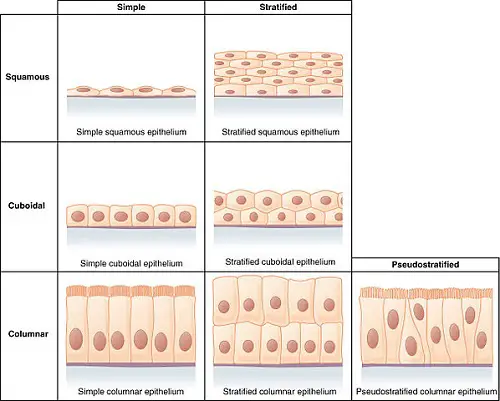
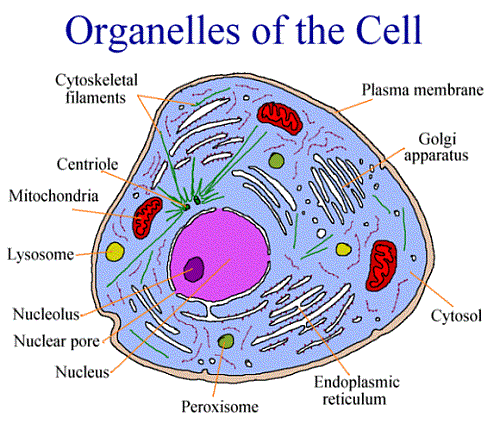
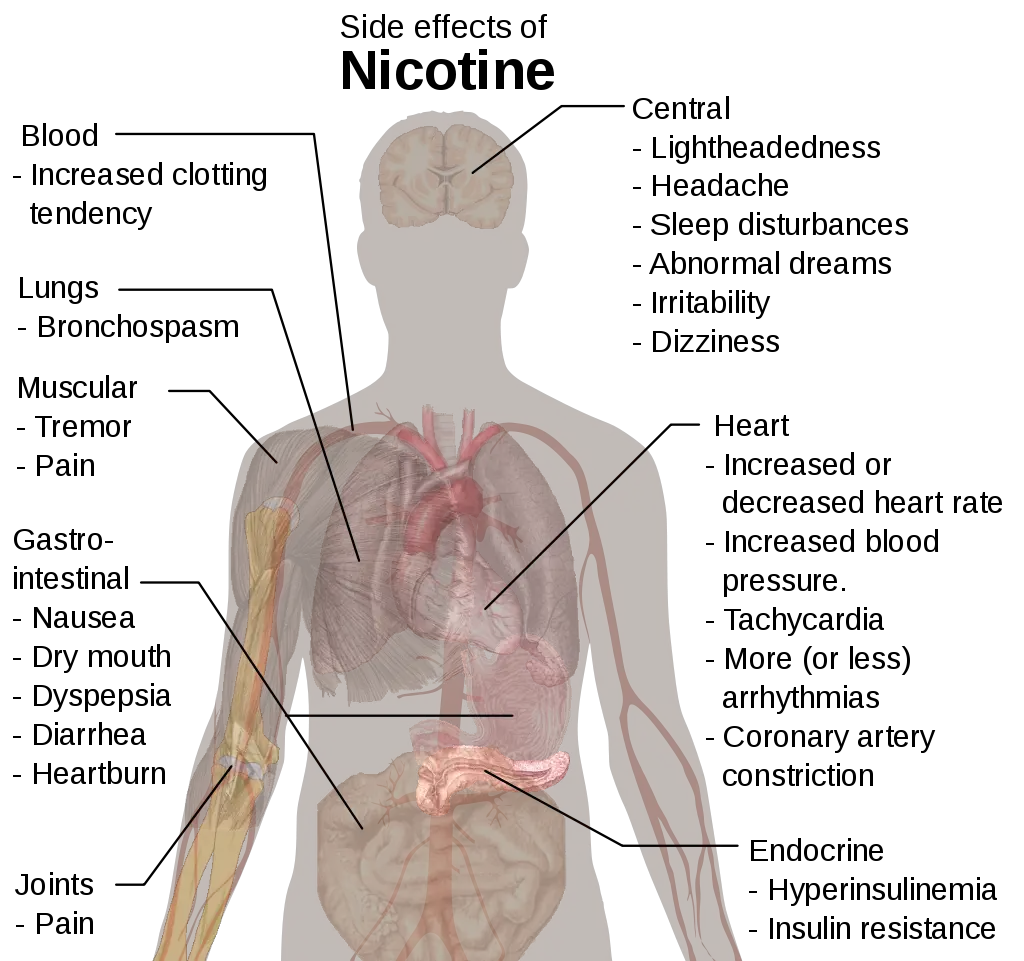





Leave a Reply